Uncle Theo’s Cirque du Freak
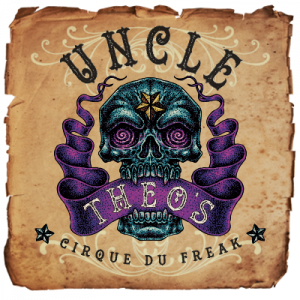
Among mundane folk, the Cirque satiates the hunger for grotesqueries and the darkly fantastic — it disturbs while it entertains. Only the staunchest of patrons escape its marvels without at least a shiver of disgust mixed with the thrill of discovery and wonder. Curiosities, oddities, horrors, and revelry abound. There’s something for everyone’s dark desires at Uncle Theo’s, and few leave it the same as when they entered.
Among the Enlightened, the members of the Cirque have historically been known as couriers and information brokers between the other arcane societies, a role facilitated by being frequently on the move. However, with the invention of the telegraph, they have adapted to provide more… specialized services. To their faces, other sorcerers ask for their services as “investigators” or “procurers,” but behind their backs they are more commonly referred to as spies, thieves, and saboteurs. As one might expect, more than a few outsiders harbor grudges for being the mark of such schemes.
The sorcerers among the Cirque are a motley collection who practice a mélange of different magical arts without any specific, unifying praxis. Prospective students must beg, bribe, or wheedle their way into an established sorcerer’s good graces in order to be taught the basics of a particular sorcerous art. The formality and quality of such tutelage varies as greatly as the number of types of sorcery that one can find practiced among the Cirque, though, out of necessity, they tend to focus on practical, “down and dirty” applications over more theoretical studies. Some of the so-called “base” arts such as elementalism are particularly common for their general usefulness, and the Cirque notably seem to display a greater frequency and potency of Talents among the sorcerers in its ranks.
While the organization of the Cirque is loose, at best, its members are highly insular and secretive. To most members there are simply Family (those within the Cirque) and Townies (everyone else). Predictably though, cliques and cabals have formed among members with similar jobs, Talents, and skillsets, such as the Rousties (the bulk of the unskilled laborers), the Keepers (handlers and tenders of the Cirque’s menagerie of mundane animals and chimera), and the Moonlighters (thieves, con artists, grifters, pickpockets, and barkers that “work the crowds”).
The eponymous Uncle Theo is a mysterious figure with a dozen myths bolstering his legendary status. Some say he is hideously scarred or deformed, while others claim that he isn’t human at all. Still others say that the man himself is only a myth, a fiction concocted to warn away those that would think to threaten the Cirque. Those who actually claim to have seen him are few, and they speak of him only in hushed tones and vague details, if they speak of him at all.
Esoteric Institute
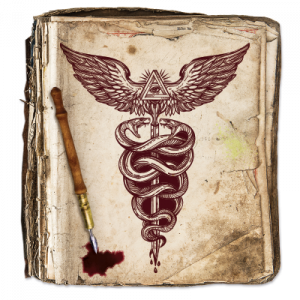
This collection of magician-scientists is at the forefront of the Industrial Revolution and are working on technologies years beyond those currently available to the average mundane citizen. Mechanical wonders, galvanic marvels, and arcane science beyond the ken of unenlightened men are their bread and butter. Presenting itself to the mundane world as a strictly private academy, the Institute itself is located in the Horticultural Hall leftover from the 1884 World’s Fair within the Upper City Park on the New Orleans riverfront. Thusly set apart from the rest of the city proper, the Institute enjoys a great deal of privacy from any prying eyes of the unenlightened masses. That seclusion has made the halls of the Institute a place of wonders of a hundred varieties.
Unaligned with any other arcane society, individual members of the Institute have worked with other sorcerers in the past, but as an organization unto themselves, they have mostly stood alone for the four years or so that they’ve officially existed. While not the first such organization to form in the wake of a Grand Symposium, they are certainly the largest to date. While many current members were individual novices or lone recluses before joining the Institute, some belonged to other associations before defecting to join their peers at the Institute, leaving behind some lingering ties and potential bad blood over the separations.
The arcane scientists of the Esoteric Institute practice a wide array of varying magical disciplines. Given their philosophical origins among the court alchemists and sages of the Middle Ages, arcanists of the Institute often have an educational basis in tangible arts such as alchemy, artificing, and sigaldry. These are only the most common practices, however, and many others such as biomancy and elementalism (particularly galvanism) find use among members of the Institute. Such studies are commonly paired with their mundane relatives, blurring the lines between sorcery and science to a degree that the distinction becomes more intellectual than practical.
In keeping with traditional hierarchical structures among arcanists, the Institute utilizes and expands upon the conventional master-apprentice roles when training new members. Initiates begin as Apprentices, progress to Journeyman with basic proficiency in their chosen discipline, and eventually become Masters. In practice, this system has had to work rather loosely in these early years of the Institute’s existence as arcanists of varying degrees of skill have joined. The financial and administrative aspects of the Institute have thus far been seen to by a handful of wealthy and influential Masters. These founders set down the principles for the Institute’s governing council: the Trust. Prospective Trustees must be primarchs in their chosen discipline; individuals worthy of the ancient title of Arch Magus. As such, there are still several vacant seats among the Institute’s ruling body.
Theosophical Society
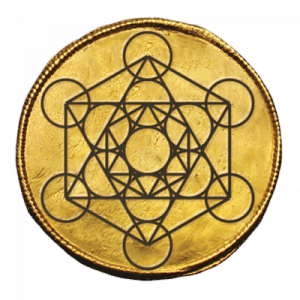
A small cabal of powerful and influential sorcerers rose to prominence in the Society, transforming it seemingly overnight into the powerhouse it is today. Society arcanists began an aggressive and covert campaign to seize control of power sites, ley lines, and arcane repositories across the region. This naturally brought them into direct conflict with a number of other arcane societies, particularly their erstwhile associates, the White Horse Adventurers’ Club.
Among the unenlightened, the Theosophical Society is a fairly typical, if prolific, wealthy and cultured drawing room society. Nationally, their membership numbers in the hundreds, but most of these are dabblers and poseurs; mundane socialites, dilettantes, and ladder climbers who play at occultism. With the rise of the popularity of spiritualism in America, the Society has gained mainstream appeal among the upper class, and their gatherings give attendees the opportunity to mingle with their peers, discuss the cerebral, and perhaps glimpse the ephemeral.
Arcanists of the Society were long judged by other sorcerous groups as amateurs worthy of little respect or consideration. For decades after the fall of the Arcanum, they were seen as pretenders, a reputation that they capitalized on when they began to make their moves in the winter of 1872. When ley lines began shifting and robbing other cabals of power, none suspected the Society until it was far too late. Only when the Society had completely ousted their rivals in the White Horse Adventurers’ Club from their previous seat of power in New York did anyone finally begin to see that the winds of change had begun to blow in a different direction. Two and a half decades of consolidating power and cultivating their web of influence throughout the political and economic aristocracies of America have turned them into one of the dominant arcane societies in the western world in a single generation. Few remaining would make the mistake of underestimating the Society as it exists today.
Following the traditions of the Arcanum, the Society has its mystical roots in formulaic hermetic sorcery; basic thaumaturgical arts, and simple invocations like warding circles, ley line channeling, and minor charms. However, many outside arcanists suspect the addition of a powerful handful of nethermancers to be responsible for the Society’s rapid rise to power nearly thirty years ago. Since then, the Society has made a habit of recruiting more modern arcanists. Psychics, mentalists, and mediums are commonplace at their gatherings, and philosophical disagreements between such progressives and traditional hermetic sorcerers are frequent.
The structure of the Theosophical Society is somewhat unique among arcane societies, given the interconnected nature of their mundane and arcane circles. Aspiring members must come from appropriate wealth, education, and social standing, and they must have an existing member as a sponsor. Once admitted, the new member must stand on their own reputation, social acumen, and magical skill, if any. Those who prove sufficiently Enlightened and possessing of proper and desirable mystical ability and/or Talent may be invited into the Inner Circle, again, with sponsorship of an existing member of those cloistered ranks. Those so initiated gain access to the Society’s considerable arcane resources and the potential to rise as far as their capabilities permit, provided that they can survive in the competitive internal power struggles and cut-throat nature of the Society’s political arena.
White Horse Adventurers’ Club
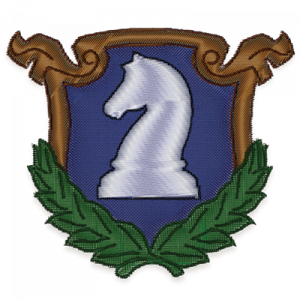
To the uninitiated, the Club is the best of the best of its sort of organization — eminently elite, relentlessly discerning, and utterly exclusive. Their galas and exhibitions are the hotly anticipated events of the season. They wield a great deal of influence in and around Charleston, particularly among the less stuffy members of the upper class, sailors, and porters at the harbor, and those who curate and trade in antiquities. Many of the Club’s members enjoy no small amount of acclaim in their respective fields and social circles, and a few are even the subject of popular serial dramas.
For restless arcanists of means who would rather experience the mysteries of the world than read about them in some musty old book, the Club is a thing to aspire toward. While they might not be the only sorcerers with such inclinations, they are certainly the best organized, best supported, and best funded in the world. Though their rivalry with the Theosophical Society over ley lines, power sites, and similar upper class circles of influence is well known to the other arcane societies of America. Some twenty years ago that conflict drove the Club from its previous seat of power in New York to seek more hospitable territory in Charleston. Since then, the conflict has cooled mostly to a shadow war when the two arcane societies’ influences or interests overlap. Those who are not in a position to benefit from this conflict typically know well enough to stay out of the line of fire.
Like most arcanists that were set adrift after the demise of the Arcanum, sorcerers of the Club begin their arcane training with a traditional hermetic praxis. Unlike most others, their mystical skills tend to diverge wildly beyond that basic groundwork. Adventurers’ far-flung travels and diverse studies expose them to an incredible diversity of magical traditions from around the world. Travelers of the Orient have learned obscure methods of alchemy and divination, such as the cleromancy of the I Ching. Explorers of Africa return home with rudimentary skills utilizing obscure hexcraft. Stranger things still remain in ancient ruins and long forgotten tombs across the world, and every such discovery makes the sorcerous arts of the Club that much more exotic, alien, and unpredictable.
Unlike their regimented rivals in the Society, the Club holds to a loose structure among its members. This is at least partly due to their much stricter standards and methods for entry into their ranks. Prospective members must be seasoned travelers with their own unique discovery under their belt. Beyond that, the sole rule for entry is simple, yet diabolically complicated: “Show us something that you have discovered that we have not seen yet,” whether that be some ancient relic plumbed from long-forgotten ruins, a dusty tome of Atlantean spells recovered from a lost archive, or maps of hidden islands in the Pacific. Some fortunate aspirants have gained entry on their first attempt from some lucky discovery. Others have spent years petitioning for entry without success. Once members are admitted, there is little in the way of structure or hierarchy within the Club’s ranks. Magical ability and Talent are respected and valued, but not held up as a standard for advancement of any sort. Continued discoveries are likewise encouraged, but not required to maintain membership as long as individuals continue to pay their yearly dues. The pecking order among members seems to be decided largely by popularity and geniality, with some of the most powerful and influential leaders acting mainly as patrons and mentors to junior members.
Order of Cernunnos
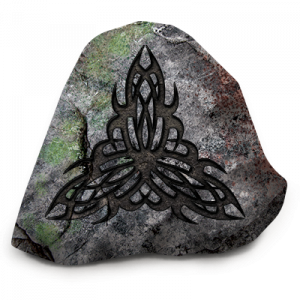
For a century and a half, the members of the Ancient Order of Cernunnos lived quietly among their neighbors, spreading their roots throughout the state and deep into Appalachia. The druidic sorcerer-priests among them remained devoted to preserving the Old Ways, passing their ancient traditions and magics down from generation to generation, only seldomly bringing new initiates into the fold. The Order lived largely in secrecy and seclusion for fear of the Sentinel witch-hunters and Arcanum meddling. They remained so through the Revolutionary War and the fall of the Arcanum. When the Great Famine brought an influx of new Irish immigrants to America, they brought even more arcanists with them, bolstering the Order’s membership, but the Civil War took a great toll on the their growing power and numbers.
After generations knowing no home but America, many of the Order came to identify themselves strongly as Americans before anything else, and the poor are always the first sent to fight. Many were lost in the war, and out of this time of chaos and destruction the Order emerged changed. A new generation of ambitious youth came under the tutelage of grizzled veterans of a bloody war. The same rules simply would not do. The Order spread into Philadelphia and built webs of influence among laborers, unions, and criminals of the flourishing Irish Mob. Now, for every conservative robed druid performing ancient rituals under the moon, there is a street-savvy arcanist weaving sorceries in an office or back alley.
Among mundane folk, the Order maintains much of its secrecy to this day. Some wise few know whispers of the Ancient Order of Druids as an amusement; a fraternal organization for the common man instead of the incestuous clubs the wealthy frequent. The average unenlightened citizen is most likely to encounter them through their steadily growing influence in organized crime and workers unions. Few would suspect the connections that their union steward or mob underboss have to barefoot pagans in Appalachia and an ancient arcane order two centuries old.
For eighty years, the Arcanum largely disregarded the Order, and the inheritors of its legacy among the Theosophical Society and the White Horse Adventurers’ Club continued to do so for another fifty years after the Arcanum’s fall. This has always suited the Order just fine. In the old days, such inattention gave them the freedom to practice their religion and magical traditions without persecution. In the last generation, it has given the Order the opportunity to build their power and influence discreetly enough that none of the other arcane societies realized that they had a new rival until it was far too late to put a stop to them.
The sorcerers of the Order largely remain devoted to the Old Ways, a magical tradition steeped in the ritual practices of the ancient druids that goes back millennia. While this praxis is related to the traditional pagan faith of the Order, particularly the veneration of the Horned God, Cernunnos, not all Order sorcerers are druidic priests. In practice, Order arcanists combine aspects of several different “base” arts, such as elementalism, channeling ley energies, and some basic aspects of nethermancy and alchemy. There are also small number of Order sorcerers that pass down closely guarded secrets of ancient and powerful sigaldry and artificing.
Organizationally, the Order is a dichotomy, split into nominally cooperative, but disparate groups divided by differences of geography and philosophy. The traditionalists maintain their demesnes and holy places in rural Appalachia. They live a relatively ascetic lifestyle, adhere near fanatically to the Old Ways, and follow the priests of the Horned God in most matters. The sorcerers among them are typically devoted and powerful, living in commune with the natural forces they wield, but they hold little influence in the outside world. In contrast, the futurists, who number nearly twice that of their rural contemporaries, make their homes in urban centers, primarily in and near Philadelphia. They are firmly entrenched in the influence struggles of the arcane societies and enjoy the comforts of modern living. Their arcanists are relatively less powerful, but often dabble in other magical disciplines. For all of these seeming disconnections, they still practice their pagan rites in private, paying at least lip service to Cernunnos as they adapt the rituals of the Old Ways to urban green spaces under moonlight gardens and basement shrines.
Beacon Hill Players
Theatre is the gateway to the fantastical, a glimpse of magic in an otherwise drab, mundane world. During a performance, audiences are transported to other places and times, and they leave changed by the experience. Would it be a surprise to learn that such performances are as much the products of true magic as they are of the skill of the performers? The Beacon Hill Players draw their audiences into their enchantments like spiders coaxing flies into their webs. They draw out the imaginations of their captives like stoking a furnace and use those flames to forge a world more to their own liking.
The Players officially came together decades ago, rising like a phoenix from the ashes of the Arcanum, though similar troupes have carried the same title off and on since before the Revolutionary War. In the early 1700s, theater groups began to flourish in the Williamsburg area of Virginia, and arcane history indicates that at least a few stage magicians and actors in the area were high ranking members of the Arcanum before its dissolution. It was after the Revolution that the Players of Beacon Hill really came together as an arcane troupe when many of those magicians from Virginia were forced out and found their way to Boston.
In the years since, magicians have come and gone from the Players, flowing with the tide of popularity, as performers always have in both the mundane and arcane worlds. Actresses arrive, play out a career, and disappear into obscurity while young lackeys grow into stage managers and playwrights, never leaving. One thing has always remained the same though — the Players of Beacon Hill attract the brightest talent, and it is a rare night when the house isn’t packed to the rafters. Some have said that this is because of the talent, but it’s known in arcane circles that the magic they practice — the dramatomancy — plays a large role in the return audiences, who feel transported during the performance, and in their beds that evening, dream of beautiful women, dastardly villains, and exotic locales.
Like most theatre troupes, this one is cliquish and self-protective. But that doesn’t mean they are without their own internal struggles and disagreements. Newspapers love to report on the various fights between actresses and their understudies, or between stage managers and their number one divas. Perhaps because of the amount of time they spend in the spotlight, the troupe’s inner workings are kept private, and many a newspaper man has found himself wearing a hat full of mud after trying to sneak a look around the backstage or after cornering a stagehand at the local pub.
In recent years, the troupe’s productions have grown ever more naturalistic, straying away from the heroics and epics that drew crowds in the decades following the Civil War. The most beloved of these plays are the horrors, those that depict evil found in the common man. Customers, elite and poor alike, revel in the blood that slicks the stage on those nights, and tickets for the most frightening plays cost dearly.
Part of the mystique of the Players is the rumor that their dear theater is haunted, a story that is seemingly supported by the Players themselves. In honor of this apparition, a single candle is lit at all times somewhere in the theatre, and despite accident or sabotage, the place has never caught fire. Visitors have claimed to hear whispers when they are alone, and ghostly singing is sometimes heard after hours. It is commonly believed by the more earnest patrons that the spirit protects the troupe, but it also makes demands upon them, and more than one cast change or plot alteration is said to have been demanded by the Specter itself.
Sentinels
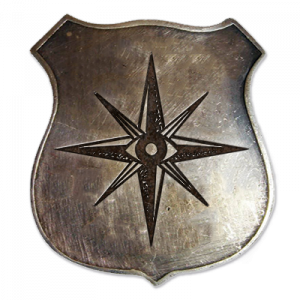
There are a few details that have been sussed out over the years and passed around the magical communities. The Sentinels clearly have some manner of support from the Church. Exorcists have been reported among their number on multiple occasions, and rumors of secret orders and societies among the Church, such as the Order of Saint George and the Ordo Venator Maleficus, have persisted since the Dark Ages. Centuries ago, wise arcanists have warned their students for generations of the dangers of practicing their magics too brazenly and calling down the wrath of an Inquisition. In the modern nights, students are told to stray from witchcraft and other dark magics, as there are too many stories of foolish arcanists simply vanishing in the night, the only evidence of their passing the Sentinel’s sign of the cross and eye with the clearly implied message: “We are watching you.”
The truth of the Sentinels is more complicated than some simple Church-funded group of militants would suggest. While most mundane folk remain blissfully ignorant of the Sentinels, their methods, and the things that they hunt, there are horrors in the world that can tear the Veil from the eyes of the uninitiated. Having Enlightenment forced on an individual is seldom a pleasant experience, and the circumstances revolving around such situations are usually even less so, often coming at the cost of someone close. Such stories are sadly all too common and leave behind scarred survivors hungry for revenge. The Sentinels have formed something of a fraternity out of their shared suffering and a desire to keep it from happening to other innocents.
While these hunters generally display no arcane skills of their own, they are nearly always in possession of a large number of relics that aid them in combatting sorcerers and supernatural creatures. Given their shapes and materials, these imbued trinkets are most likely recovered from magical creatures that the Sentinels have hunted and slain. Getting more detailed information on them is a tricky proposition at best. Attempts made to divine intelligence always fail, and those few arcanists bold enough (or foolish enough) to attempt assaulting them with curses and other malign magics find their spells go awry in strange and unpredictable ways.
There does seem to be some evidence supporting simultaneously that the Sentinels are somehow both a worldwide organization and a small group of militants. At any given time there seem to be roughly a dozen regular members, many of them spotted all across the country. Yet, at the same time, they clearly seem to benefit from a larger support structure. Whoever and whatever they truly are, there is no question of their ability to hunt down and destroy arcanists who evoke their wrath.
Eclipsed
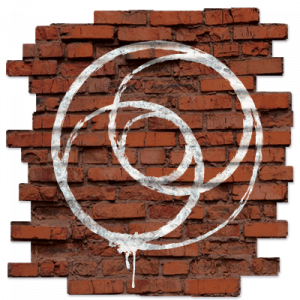
Physical malformations, spiritual possession, arcane diseases, and ancient curses barely scratch the surface of the dangers that magic can pose to folk both Enlightened and mundane. Some few are able to conceal their conditions, at least for a time, but inevitably the Eclipsed are discovered for what they are and the dangers they pose. If they are fortunate, perhaps a benevolent arcanist may simply have them committed, sealed away for the rest of their days in the vain hope that a cure for what ails them will be found. Such arcane sanatoriums are exceedingly rare — and often terrifying — places. The unfortunate majority tend to run afoul of less charitable sorcerers or the Sentinels when their conditions ultimately deteriorate, and the best one can hope for at that point is a swift death.
The unenlightened masses have only the vaguest awareness of the Eclipsed, mainly through urban legends and old wive’s tales. These sorts of stories tend to get more wrong than they do right, but they have at least succeeded in instilling in most sensible folk a healthy primal fear of the unknown. The Enlightened tend to have varying degrees of knowledge and expertise when it comes to the Eclipsed. All but the least educated arcanist at least knows about the notion of the Eclipsed and how to recognize some of their signs, but for all their tricks and knowledge, no small number of sorcerers over the centuries have fallen prey to their own pride, and then in turn to some malicious spirit or the bite of a lycanthrope.
Given their nature, few of the Eclipsed show any actual magical skill. They are no less likely to have or develop some sort of Talent, but in theory, arcanists are more prepared and aware of the sorts of threats that create the Eclipsed. Some of these unfortunates do come to benefit from a variety of different supernatural abilities; lycanthropes often display heightened senses, a revenant might be virtually indestructible, or a ghoul might be preternaturally strong. However, any such boon always comes at a steep cost; uncontrollable rages, cannibalistic hunger, bouts of insanity, or a constantly twisting or decaying body only being a few such concerns. Any such abilities are truly a dull silver lining on a very dark cloud. Only the very cynical or fatalistic would call such things a “gift.”
Throughout most of recorded history, the Eclipsed have shown very little in the way of organization. Vampires and ghouls are typically the only such creatures known to naturally gather into groups, forming nests out of some base instinct for mutual protection. However, some few of the Eclipsed have recently begun banding together. Their numbers seem to be growing, and many disparate kinds of the afflicted are increasingly discovered working together. Perhaps even more suspicious are the rumors that there have been Sentinel attacks on these groups that have outright failed in the last handful of years, something previously utterly unheard of. These changes seem to suggest the emergence of some sort of leadership among their ranks, one familiar with or able to anticipate the movements of the Sentinels and charismatic or powerful enough to maintain loyalty and control over the uncontrollable. Something is making the monsters that lurk in the shadows join forces, a prospect that should make anyone with sense at least a little nervous.
Atlantean Accord
The origins of the Atlantean Accord are hotly debated among its membership, but it is generally agreed to have existed for over a millennia — despite the centuries of conflict of the nations under the Accord’s sway. What is known for certain is that the Magisters Council of the Accord, a circle of thirty magicians possessing both political importance and sorcerous power, dates back to the mid 1400s, to shortly after the fall of Constantinople. Since that era, it has overseen the structure, social construction, and at times wars of the Accord as a whole. Its word, for the magical communities under its dominion, is law.
But for all of its authority, the Atlantean Accord is loosely structured, and after an intense apprenticeship, most magicians are free to live unimpeded — as long as they obey the dictates of the Magisters Council. It is rumored that the Council possesses trained enforcers who ensure that every arcanist within its borders adheres to its will. But there is little evidence to this gossip, as membership in the Accord is heavily rewarded. Regardless of the social status, or lack thereof, of a new Atlantean, upon finishing their apprenticeship, all are granted an elevation to a more comfortable level in society. The Council itself is ethnically, nationally, and gender diverse, as the Accord cares more for an individual’s power and its own primacy than for the happenstance of birth. This level of social acceptance and financial stability means that most Atlanteans are quite content with following the mandates of the Council.
There are also few laws within the Accord itself. Apprenticeship is inviolate — one remains an apprentice until their Master (a gender neutral term among the Accord) releases them, and a Master cannot interfere with another’s apprentice. While it is possible to change Masters while apprenticed, it is rarely done — and never without some enmity growing between the Masters. Once released from service, an Atlantean is free to live wherever they desire and practice their magics as they see fit, though there are some arts considered too dangerous. Chronomancy, or the manipulation of time, is forbidden, and those who explore it have been known to either be executed outright or relegated to the status of a Thrall (a derogatory term for an Atlantean who has had their rank and privileges stripped and who now stands as an Apprentice, usually to one of the Magisters Council). Necromancy is accepted, though rarely are Apprentices trusted to dabble in such powers. Blood magic is not forbidden, per se, but is widely regarded as foolish. To gain such power, it is necessary to submit your will to a daemon, and who would wish to subjugate themselves to another for a lifetime?
Outside of this rigid system, there are two main beliefs that separate the Accord from those in the American Arcanum — independence and the so-called “Eclipsed.” First, there is only one group of independent arcanists in Europe — the Delphians. The seers have purchased their freedom from the Accord with the gifts of their foresight, but all other arcanists must join the Accord or face the wrath of the Magisters Council. A bigger problem for the American sorcerers, however, are their attitudes toward what the Accord terms the Accursed — their term for what is known stateside as the Eclipsed. It is commonly believed that the so-called “Accursed” are put to death whenever they are encountered, though the logistics of such an act are mind boggling, at best. Still, it is known that the Accord deals with the Eclipsed harshly, even if they are not all summarily executed.
The Delphians
There is only one collection of non-American magicians who have escaped the control of the Atlantean Accord — the Delphians. This collection of prophets, soothsayers, and oracles claims direct descent from the Grecian Oracles, and they honor that connection by continuing the ancient practice of what is called The Offering. At ancient Delphi, any petitioner was expected to bring an offering to the gods and the priesthood, even if just some small token of sacrifice. The modern day Delphian leadership, however, believes in more than a small token. To receive the wisdom of the seers requires a powerful offering of jewels, money, or property, and this has been the custom since the end of the 1300s, at least. Through this practice, The Delphians have grown prosperous and influential.
This power has had the added benefit of ensuring that the Delphians have their independence from the Atlantean Accord. There is a longstanding pact between them, in fact. The Delphians may remain independent from the dictates of the Accord and free to practice their arts without interference or oversight, and any arcanist possessing a Talent for prophecy in Accord territory will be given to the Delphians for training. In exchange, the Delphians sell their services only to Accord magicians or the non-magically aware that the Accord approves. With this compromise, the Accord has cemented its hold as the only magical society from Ireland to Turkey, with the Delphians serving as both advisors and an early alarm system.
Control over the flow of prophecy is the cornerstone of Delphian influence and strength. While anyone can dabble in foretelling, only the truly Talented can pierce the future. They can practice the arts of reading the lines of fate (examining tea leaves, entrails, crystals, etc.), but they are also prone to powerful visions that arise from sources outside of themselves. These prophetic manifestations are often difficult to interpret, at times entirely incoherent, and entirely outside of the control of the augur. The Delphians have been recording and storing these visions for the entirety of their existence, but in the last few centuries, the archives have fallen into disarray.
At least, they were in disarray until several years ago, when the Delphians took the initiative, for the first time in possibly over a millennia, and sent a delegation to the Atlantean Accord unprompted. It is not entirely known what passed between the Delphians and the Magisters Council, but it certainly turned the Accord’s eyes towards America — before the new Arcanum was even proposed. Something unprecedented is occurring in the United States, and its repercussions are severe enough to spur the Delphians out of their usual neutrality.


